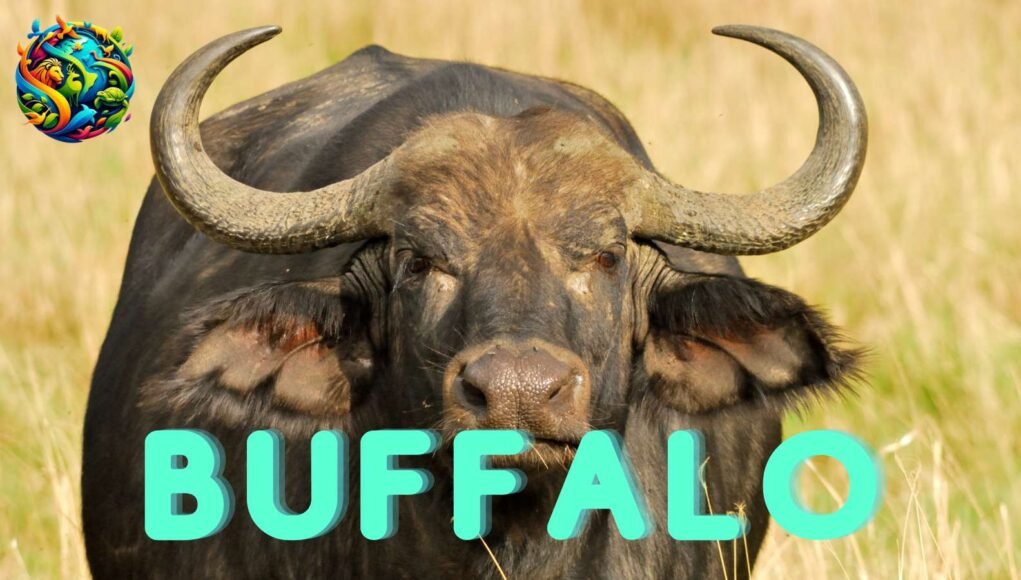Buffalo: The Mighty Grazer and Symbol of Strength in the Wild
Introduction
The buffalo, a symbol of power and resilience, is one of the most iconic animals in the world. Found in Africa, Asia, and North America, this majestic creature plays a vital role in maintaining the balance of ecosystems. Known for its massive size, formidable horns, and herd behavior, the buffalo has captivated humans for centuries.
From the vast savannas of Africa to the wetlands of Asia, the buffalo thrives in diverse habitats. Its ability to adapt to different environments and its importance to local cultures make it a fascinating subject of study. This article explores the world of the buffalo, delving into its habitat, diet, behavior, and cultural significance.
Amazing Facts
- Size and Strength: Weighing up to 2,000 pounds, it is one of the largest land animals.
- Herd Mentality: Lives in large herds, sometimes numbering in the hundreds, for protection and social bonding.
- Horns: Both males and females have horns, which can span up to 6 feet in some species.
- Swimming Skills: Surprisingly agile in water, often seen crossing rivers and lakes.
- Cultural Icon: Revered in many cultures as a symbol of strength, endurance, and prosperity.
Habitat and Food
- Geographical Range: Found in Africa, Asia, and North America.
- Preferred Habitats: Grasslands, savannas, wetlands, and forests.
- Diet: Herbivorous, primarily grazing on grasses, but also consuming leaves, shrubs, and aquatic plants.
- Grazing Patterns: Feeds mostly during the cooler parts of the day, such as early morning and late evening.
- Ecological Role: Helps maintain grasslands by preventing overgrowth and promoting plant diversity.
Appearance
- Size: Massive build, with males being larger than females.
- Coat: Thick, dark fur in African and North American species; sparse hair in Asian water buffalo.
- Horns: Curved or straight, depending on the species, used for defense and dominance displays.
- Body Shape: Stocky and muscular, with a broad head and strong legs.
- Distinct Features: Prominent shoulder hump in bison and a drooping face in water buffalo.
Types and Subspecies
The buffalo family includes several species and subspecies:
- African Cape Bufalo: Known for its aggressive nature and large herds.
- Asian Water Bufalo: Domesticated for farming and milk production; wild populations are rare.
- North American Bison: Once nearly extinct, now recovering due to conservation efforts.
- Forest Bufalo: A smaller subspecies found in Central and West Africa.
- River Bufalo: Commonly domesticated in Asia for agricultural purposes.
Each species has unique adaptations to its environment, showcasing the diversity within the buffalo family.
Predators and Threats
Despite their size and strength, they face several challenges:
- Natural Predators: Lions, Crocodiles, and Hyenas prey on young or weak individuals.
- Human Activity: Habitat loss, hunting, and competition with livestock threaten populations.
- Disease: Susceptible to diseases like bovine tuberculosis and foot-and-mouth disease.
- Climate Change: Alters grazing patterns and reduces water availability.
- Conservation Status: While some species are stable, others, like the wild water buffalo, are endangered.
Mating and Reproduction
- Breeding Season: Typically occurs during the rainy season when food is abundant.
- Mating Rituals: Males compete for females through displays of strength and dominance.
- Gestation: Lasts about 9-11 months, depending on the species.
- Calving: Females give birth to a single calf, which is protected by the herd.
- Maturity: Calves are weaned at around 6-9 months and reach maturity at 3-5 years.
Communication
- Vocalizations: Uses grunts, bellows, and snorts to communicate with herd members.
- Body Language: Displays dominance or submission through posture and movements.
- Scent Marking: Marks territory with urine and glandular secretions.
- Herd Coordination: Relies on visual and auditory signals to move as a group.
- Alarm Calls: Warns the herd of approaching predators.
Movies Featuring
The buffalo’s majestic presence has made it a popular subject in films and documentaries:
- “Dances with Wolves” (1990): Features the North American bison and its cultural significance.
- “The Last Buffalo” (2018): A documentary highlighting conservation efforts.
- “African Safari” (2013): Showcases the Cape buffalo in its natural habitat.
- “The Ghost and the Darkness” (1996): Includes dramatic scenes with buffalo herds.
These portrayals highlight the buffalo’s importance in both nature and culture.
Pronunciation in Different Languages
The buffalo’s name varies across languages:
- English: BUH-fuh-loh
- Swahili: Nyati (NYAH-tee)
- Hindi: भैंस (Bhains)
- Spanish: Búfalo (BOO-fah-loh)
- French: Buffle (BUH-fluh)
These names reflect its global presence and cultural significance.
FAQs
Q: How big can a they get?
A: Some species, like the Cape buffalo, can weigh up to 2,000 pounds and stand over 5 feet tall at the shoulder.
Q: What do they eat?
A: They are herbivores, primarily grazing on grasses, but also consuming leaves, shrubs, and aquatic plants.
Q: Are they dangerous?
A: Yes, especially African Cape buffalo, which are known for their aggressive nature and unpredictable behavior.
Q: What is the difference between a buffalo and a bison?
A: Bison have a shoulder hump and are native to North America, while buffalo have straighter horns and are found in Africa and Asia.
Q: How do they communicate?
A: Through vocalizations, body language, and scent marking.
The buffalo’s strength, resilience, and cultural significance make it a true marvel of the natural world. Whether you’re a wildlife enthusiast or simply curious, this majestic creature is sure to leave you in awe.




